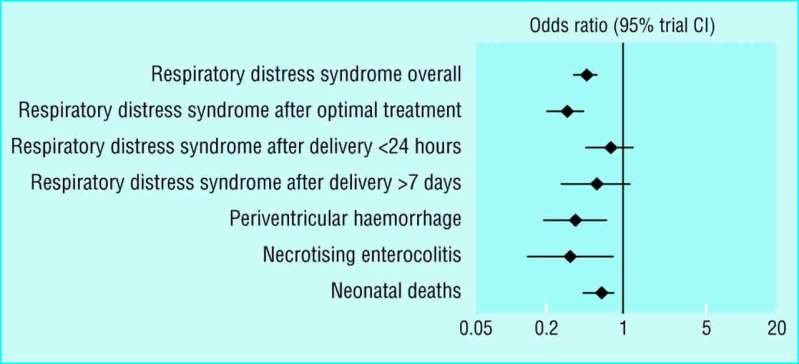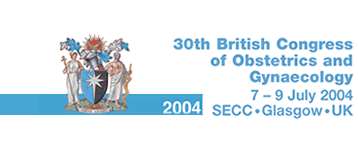Slide
Imperial College London
Antenatal steroids after 34 weeks – wise precaution or unnecessary risk? Cape Town November 2015
P J Steer Professor of Obstetrics
Academic Department of Obstetrics and Gynaecology Chelsea and Westminster Hospital
Imperial College London
Antenatal betamethasone
for the prevention of RDS
• Significant reduction in the incidence of
RDS in infants <32 weeks gestation at birth when mothers were treated with betamethasone for 2-7 days before delivery
Liggins GC and Howie RN, Pediatrics 50;515-525, 1972

ANTENATAL STEROIDS FOR THE
PREVENTION OF RESPIRATORY
DISTRESS SYNDROME
Crowley, P. Cochrane meta-analysis of 15 trials, 1996

Newnham JP, Moss TJ, Nitsos I, Sloboda DM.
Antenatal corticosteroids: the good, the bad and the unknown.
RISKS OF ANTENATAL STEROIDS
• In animal studies, steroids delay myelination
in the fetal brain and reduces the growth of all fetal brain areas particularly the hippocampus1
• In humans, decreased birthweight2 • an increase in behavioural disorders at 3
1. Whitelaw A,.Thoresen M. Antenatal steroids and the developing brain.
Arch Dis Child Fetal Neonatal Ed 2000;83:F154-F157.
2. Bloom SL, Sheffield JS, McIntire DD, Leveno KJ. Antenatal dexamethasone and decreased birth weight.
Obstet.Gynecol. 2001;97:485-90.
3. Newnham JP, Moss TJ, Nitsos I, Sloboda DM. Antenatal corticosteroids: the good, the bad and the unknown.
Curr.Opin.Obstet.Gynecol. 2002;14:607-12.
RISKS OF ANTENATAL STEROIDS (2)
• long-term effects on the setting of the
hypothalamo-pituitary axis and glucose homeostasis4
• higher systolic and diastolic blood pressures
in adolescence, and possible clinical hypertension in survivors well beyond birth5
4. Welberg LA, Seckl JR, Holmes MC. Prenatal glucocorticoid programming of brain
corticosteroid receptors and corticotrophin-releasing hormone: possible implications for behaviour.
Neuroscience 2001;104:71-9.
5. Doyle LW, Ford GW, Davis NM, Callanan C. Antenatal corticosteroid therapy and
blood pressure at 14 years of age in preterm children. Clin.Sci.(Lond) 2000;98:137-42.
If one course of steroids is good….
Then multiple courses must be even better
Practice in the UK 1997
A survey of practice was carried out in the UK in 1997
98% of responding units prescribe
multiple courses of antenatal steroids
Brocklehurst P, Gates S, McKenzie-McHarg K, Alfirevic Z, Chamberlain GVP. Are we prescribing multiple courses of antenatal corticosteroids? A survey of practice in the UK. British Journal of Obstetrics and Gynaecology 1999; 106; 977-979.
MULTIPLE COURSES OF ANTENATAL
STEROIDS - BENEFIT OR HARM?
• Multiple courses were not shown to confer additional benefits.
L. M. Smith et al, J Matern Fetal Med 9 (2):131-135, 2000.
• Multiple courses of antenatal betamethasone are associated
with increased risks of perinatal infectious morbidity and neonatal death. S. T. Vermillion, et al. Am J Obstet Gynecol 183 (4):810-814, 2000.
• In humans, decreased neonatal head circumference
Walfisch A, Hallak M, Mazor M. Obstet Gynecol 2001;98:491-7




Is a single course safe?
• 30-31 years follow up of Auckland randomised controlled trial of
antenatal betamethasone – 1218 babies born
• 75 g oral glucose tolerance test
• Participants exposed to betamethasone had significantly higher
plasma insulin concentrations at 30 min (60.5 vs 52.0 mIU/L) and lower glucose concentrations at 120 min (4.8 vs 5.1 mmol/L)
• "Our findings of changes in the glucose-insulin axis provide
experimental evidence to lend support to the glucocorticoid hypothesis for the fetal origins of adult disease"
Dalziel SR et al:
BMJ. 2005 Sep 24;331(7518) :
Lancet. 2005 May 28-Jun 3;365(9474):1856-62
J Clin Endocrinol Metab October 2012 97:3457-9
Reynolds RM and Seckl JR
The long-term effects of exogenous glucocorticoid exposure in late pregnancy for these children are unknown.
data in a nonhuman primate model suggest dose-associated programming of cardiometabolic parameters
the lowest dose of glucocorticoid possible should be used to minimize long-term adverse effects
Kelly et al, Pediatrics 2012 128:1283-90
• Glucocorticoid exposure is associated
with a localized increase in aortic arch stiffness, similar in magnitude to turn born individuals a decade older. The change in stiffness does not relate to changes in glucose metabolism that were also evident in this cohort
Long, BN et al, Am J Obstet
Gynecol 2013;208:217.e1-8
• This is the first demonstration that
synthetic glucocorticoid doses in the clinical range have multigenerational effects on hypothalamo-pituitary-adrenal activity in precocial species, indicating the need for the study of long-term effects of fetal synthetic glucocorticoid exposure
Outcome at 5 years of age
• 1719 subjects; 871 given steroids
• No benefits of multiple courses found • Odds ratio of neurosensory disability in
babies born at term following multiple courses = 3.7 (1.57-8.75), P=0.005
Asztalos et al, JAMA Pediatr. 2013;167(12):1102-1110


RCOG greentop guidelines number 7
Antenatal betamethasone and incidence of
neonatal respiratory distress after elective
caesarean section: pragmatic randomised trial.
• Stutchfield P1, Whitaker R, Russell I;
Antenatal Steroids for Term Elective Caesarean Section (ASTECS) Research Team.
• BMJ. 2005 Sep 24;331(7518):662.
Epub 2005 Aug 22.
Elective delivery at term
Weeks gestation
Stutchfield P et al: BMJ. 2005 Sep 24;331(7518):662.
Giving steroids before elective caesarean section.
BMJ. 2005 Sep 24;331(7518):645-6.
• A single course of steroids reduces neonatal mortality in babies
born before 34 weeks and this perhaps justifies the small risk of long-term side-effects. However, no such substantial benefit has been shown after this gestation. Delaying delivery until 39 weeks, unless necessary, would seem a more prudent option than giving steroids whose long-term safety, even as a single course, remains questionable.
rapid response 9th October 2005
• Treatment group 26/467 (5.6%)
admitted to SCBU for any reason
• Controls 32/475 (6.7%)
• Relative risk for neonatal admission
following steroids of 0.82 (95% confidence interval 0.5 – 1.37)
Stutchfield reply
BMJ 14 December 2005
• The study was not powered or designed to show a
difference in the total admission rate, merely the difference in the numbers admitted with respiratory distress.
• If a larger study was designed and adequately
powered to show an overall difference in all admissions, we are confident that a reduction would be seen as a direct result of fewer admitted with respiratory distress.
Stutchfield trial follow-up
• Lower rate of respiratory morbidity in
steroid treated vs controls at age 8-15 years – 2% vs 9%
• No difference in hospital admissions or
• Low academic achievement significantly
more common after steroids – 17.7% vs 8.5% (p=0.01)
Stutchfield PR et al Arch Dis Child Fetal Neonatal Ed. May 2013; 98(3): F195–F200
Aiken et al 2014
• "a lack of effect of glucocorticoids on cognitive
function following birth at term cannot safely be inferred by the apparent absence of an adverse effect in the context of preterm birth"
• "exposing the fetus or neonate to potent synthetic
may cause an early switch to differentiation and maturation in the developing brain"
• "It is plausible that this could result in adverse effects
on long-term neurodevelopmental outcome"
Aiken C et al, JAMA Pediatrics June 2014;168:507-509
Aiken et al 2014
• "The question facing obstetricians and
neonatologists is whether this degree of reduction in short-term respiratory morbidity justifies the risk that glucocorticoids may have an adverse effect on cognitive function of the child in later life. Given the present evidence, we do not believe the risk is warranted"
Babies born preterm
Babies born at term
• Benefit > harm
• No obvious benefit • BUT • Harm persists?
Risk of adverse effects on
babies born at term
• Significantly higher rate of low 5 minute
• Trend to increase in SGA1 • Significantly increased cortisol reactivity
to acute psychosocial stress in 6- to 11-yr-olds2
1. Eriksson L et al Acta Obstet Gynecol Scand 2012;91:1415–1421. 2. Alexander N et al J Clin Endocrinol Metab 2012;97: 3538–3544
A population-based, multifaceted strategy to implement antenatal corticosteroid treatment versus standard care for the reduction of neonatal mortality due to the preterm birth in low income and middle income countries: the ACT cluster randomised trial
Lancet. 2015 Feb 14;385(9968):629-39
• October 2011 – March 2014 • Argentina, Guatemala, India, Kenya, Pakistan, and Zambia • 51 Intervention clusters with 47,394 livebirths • 50 Control clusters with 50,743 livebirths • Antenatal steroids: 45% vs 10%
Despite increased use of antenatal corticosteroids in low birthweight infants in the intervention groups, neonatal mortality did not decrease in this group, and increase in the population overall. For every thousand women exposed to this strategy, an excess of 3.5 neonatal deaths occurred, and the risk of maternal infection seems to have been increased
"An unexpected and unfortunate finding was that the intervention resulted in an 11–12% relative increase in neonatal and perinatal mortality in the whole population."
"This harmful effect was concentrated in infants at and above the 25th birthweight percentile, in whom the relative increase in mortality was 30%. Gestational age-based analysis showed a similar effect for term infants."
How common is it for mothers given
corticosteroids preterm to deliver at term?
• Texas Women‟s Hospital1
– of 692 cases, 36% delivered >=34 weeks
• National Maternity Hospital, Dublin2
– of 277 cases, 80% delivered >=34 weeks
• Nova Scotia, Canada3
– Of 1,410 cases, 50% delivered >34 weeks
1. Davidson C et al J Reprod Med 2010; 55(1-2):14-18 2. Mahony R, et al BJOG 2010; 117(8):963-967 3. Razaz N et al Obstet Gynecol 2015; 125(2):288-296
"for every suspected preterm delivery giving rise to
an infant born before gestational week 34
there will be another one or two infants
born at a later gestational age"
"the benefits of the ACS administration,
which they will most likely receive, are less obvious"
Eriksson L et al Acta Obstet Gynecol Scand 2012;91:1415–1421
Antenatal corticosteroids: A
time for more careful scrutiny
of the indications?
Vidaeff A, Belfort M and Steer P
BJOG – In Press
• Antenatal corticosteroid administration was a big step
forward in improving the outcome in preterm birth
• But you can have too much of a good thing – multiple
courses should be avoided
• Don‟t give it after 35 weeks
• We need to improve our prediction of babies who will
actually deliver preterm so as to avoid administration of steroids to babies who cannot benefit and may be harmed
Source: http://www.uctogrefresher.org.za/Programme/Presentations/Steer%20Antenatal%20steroids%20Cape%20Town%202015%20copyright%20images%20deleted.pdf
a GUIDEBOOK to ENGLISH TEACHING ASSITANTS' LIFE TABLE of CONTENTS INTRODUCTION.3YOUR ROLE as an ETA.5PACKING and PLANNING.11HEALTH.23FINANCES and COMMUNICATION.35HOUSING.47SCHOOLS and TEACHING.57ADAPTING to a NEW CULTURE: IDENTITY.71ADAPTING to a NEW CULTURE: OBSERVATIONS and ADVICE.93LIFE in INDONESIA and LIFE AFTER INDONESIA.109LANGUAGE LEARNING.119RESOURCES about INDONESIA.129ACKNOWLEDGEMENTS. . . . . . . . . . . . . . . . . . . . . . 143
Conforme aux règlements 1907/2006/EC et 1272/2008/EC FDS x 1ère version 20/07/12 - Page 1/11 Version 1.2 du 22/09/2014 Fiche de données de sécurité 1. IDENTIFICATION DU MELANGE ET L'ENTREPRISE 1.1 Identificateur de produit Produit : 1.2 Utilisations identifiées pertinentes de la substance ou du mélange et utilisations déconseillées











